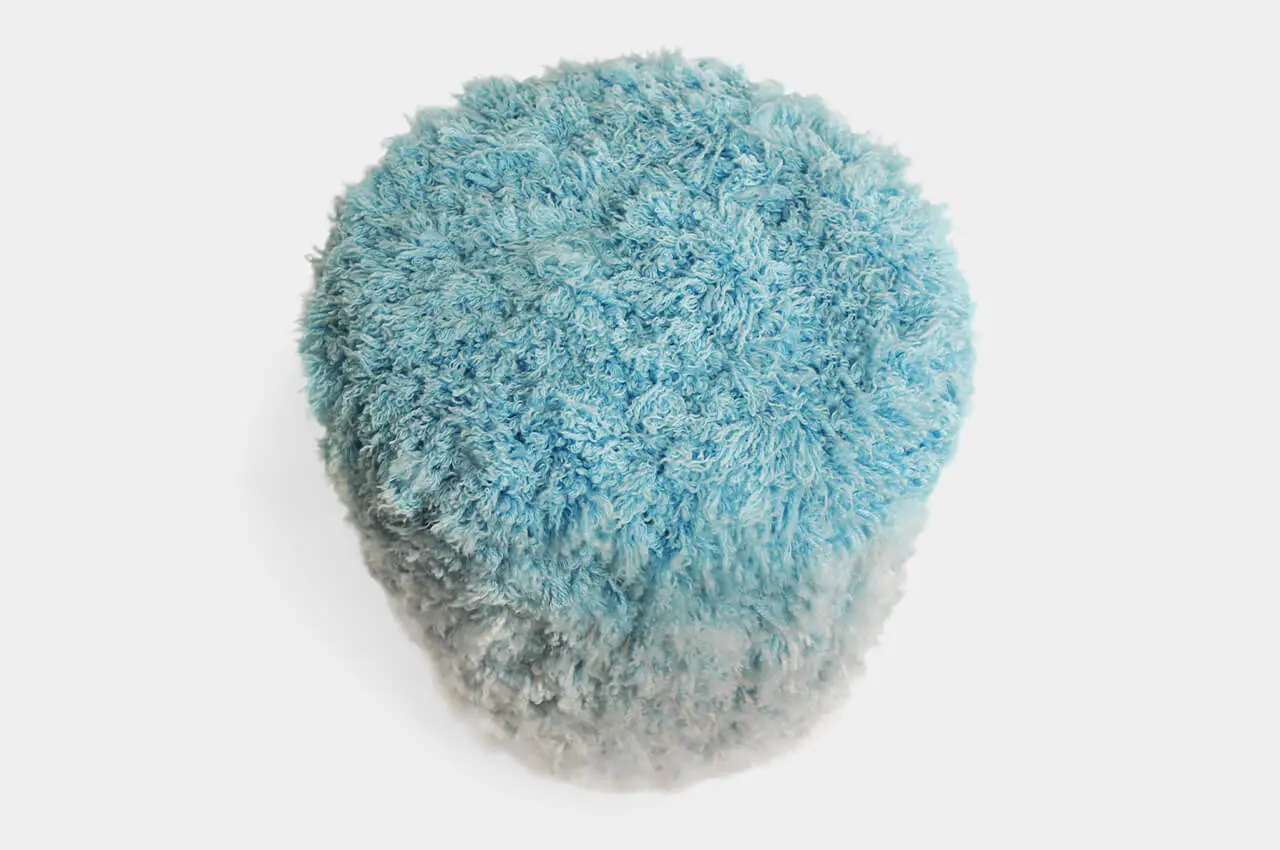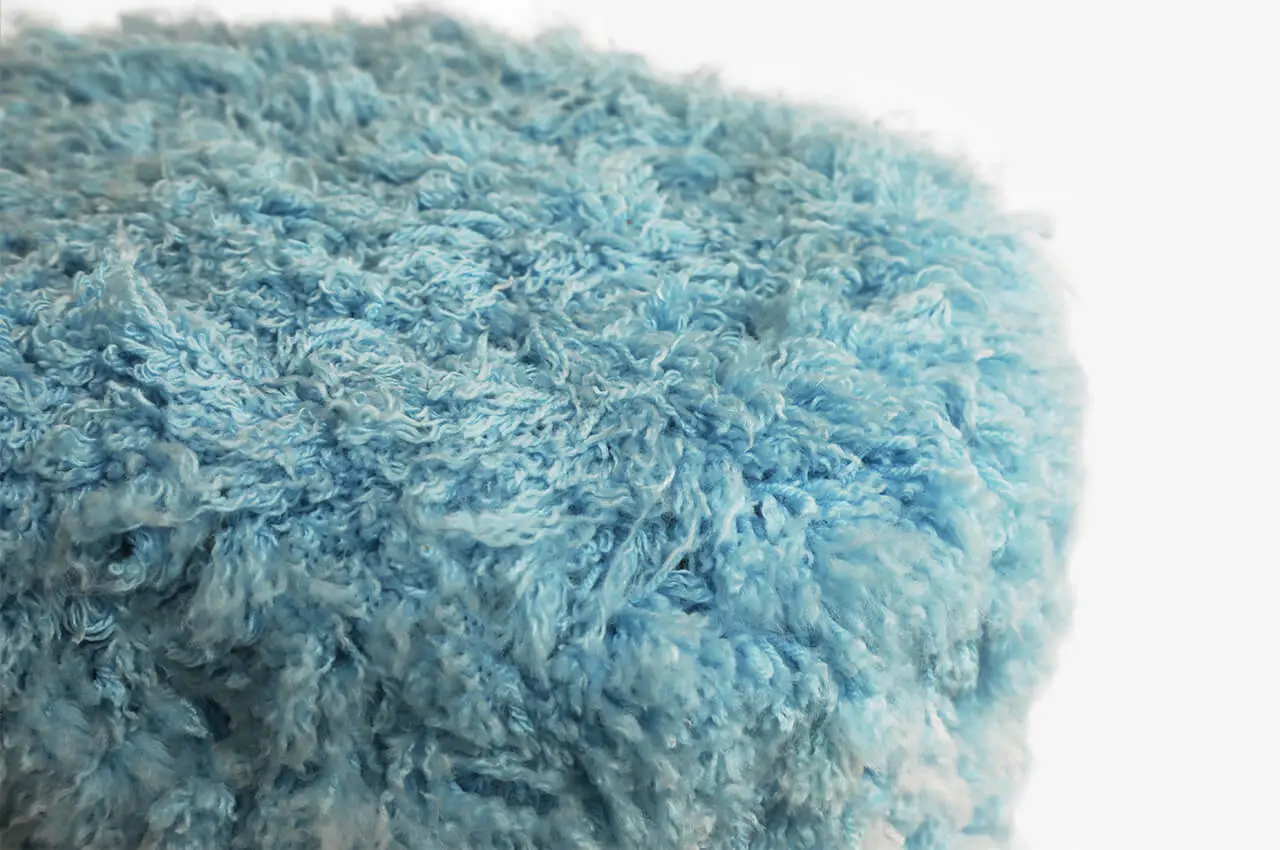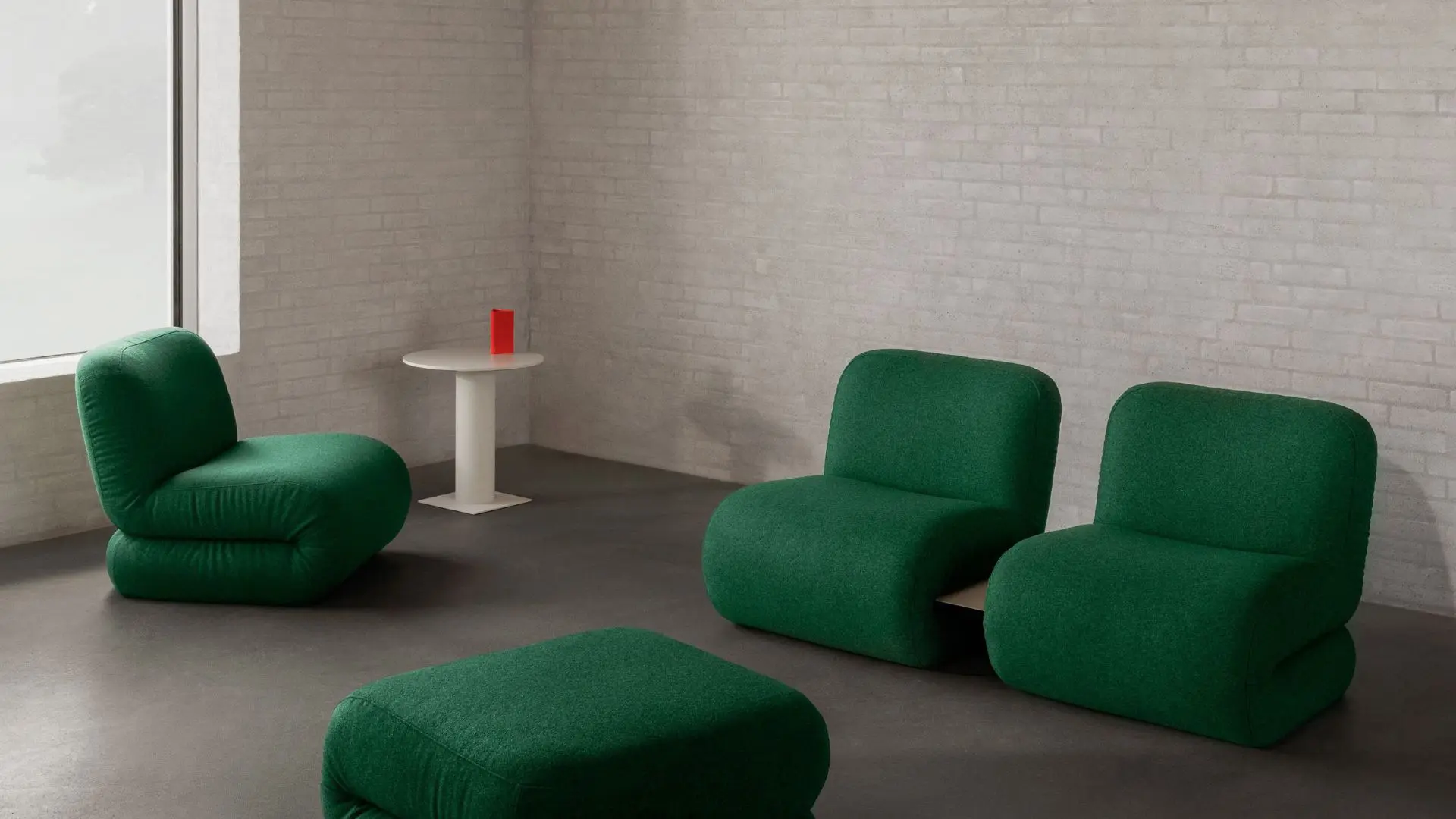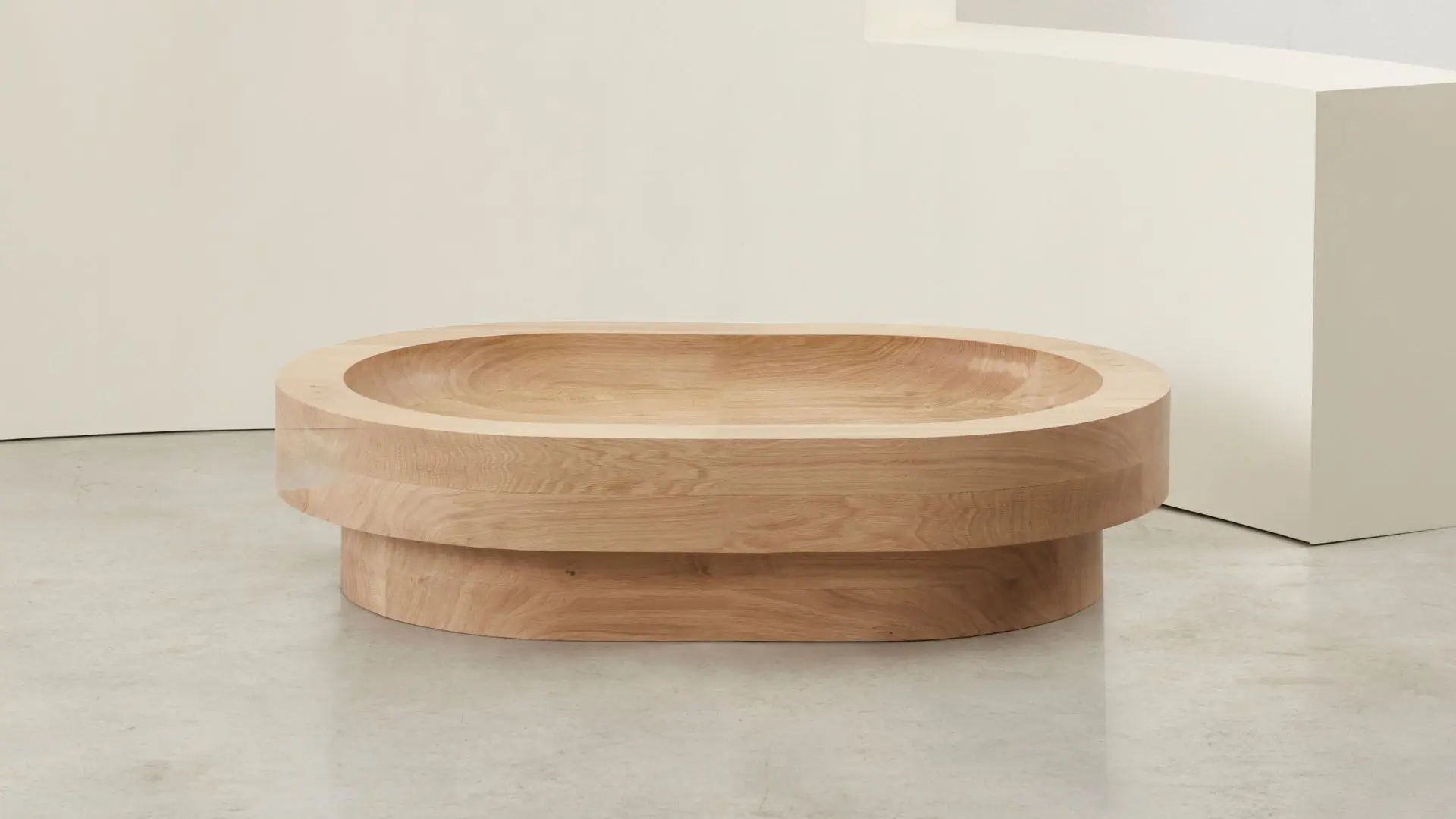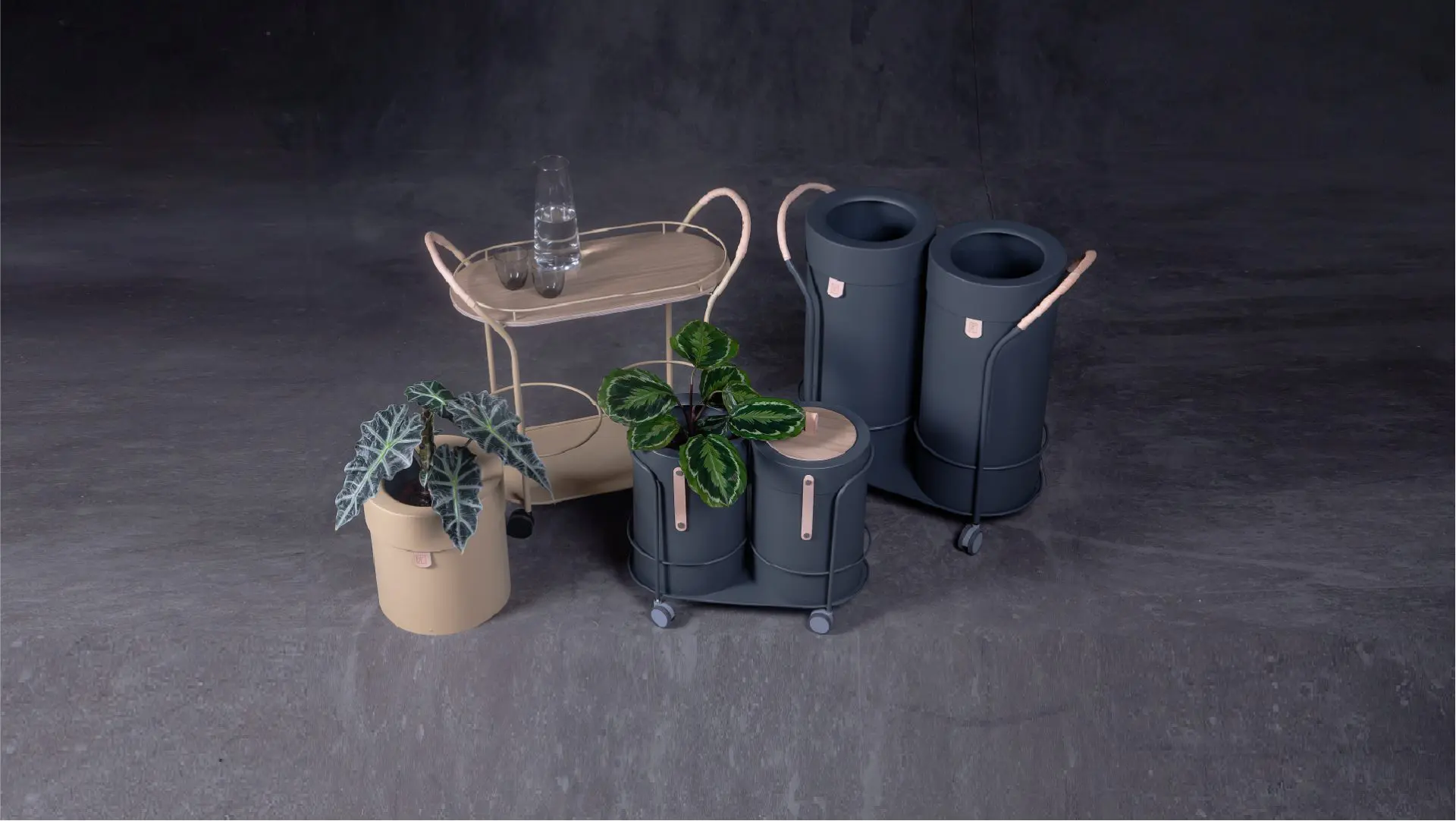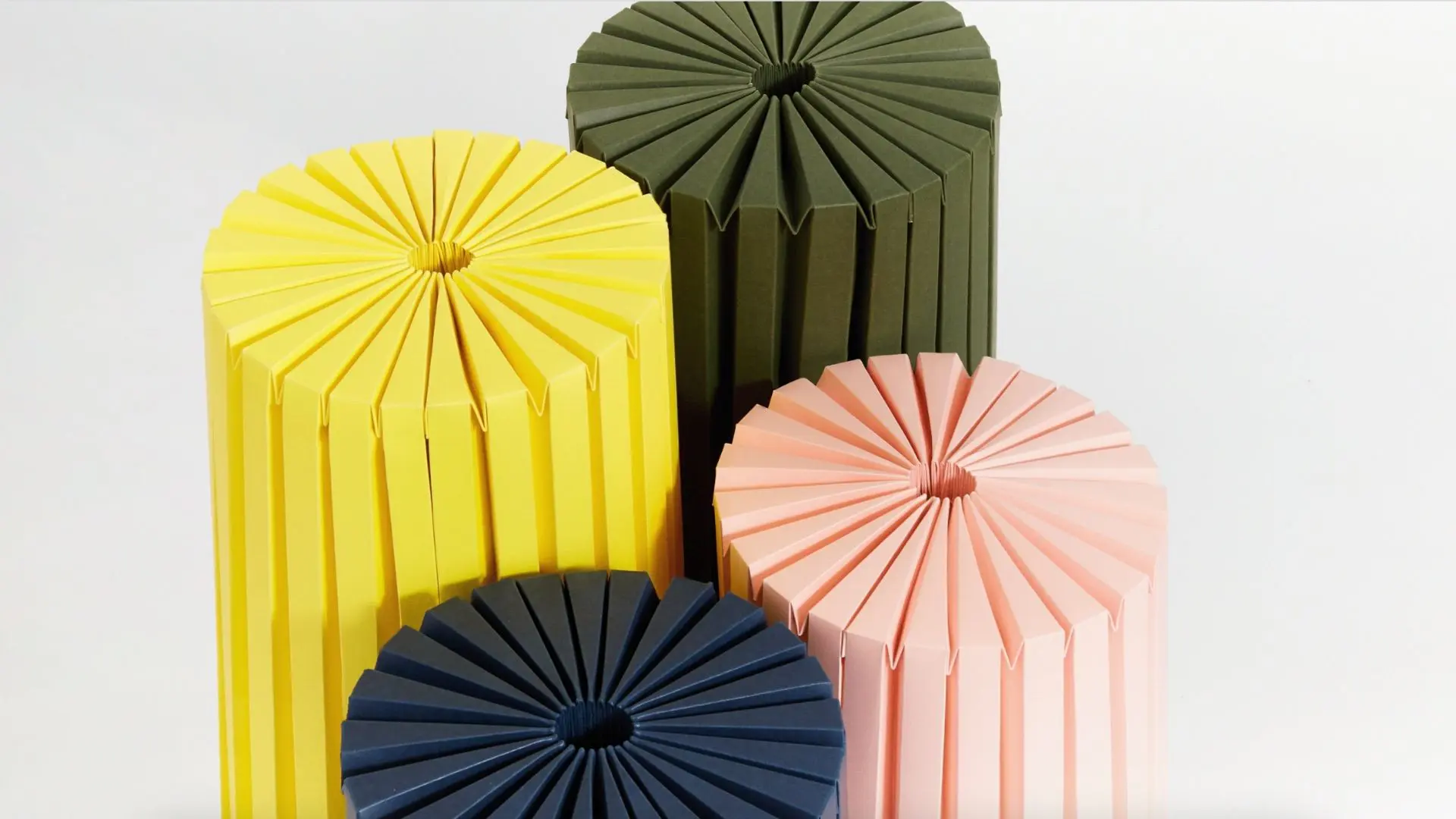The Veil stool is made from 4000 disposable face masks
British designer Joe Slatter created the white and blue stool using discarded face masks found on the streets of London, which he spun into soft yarn
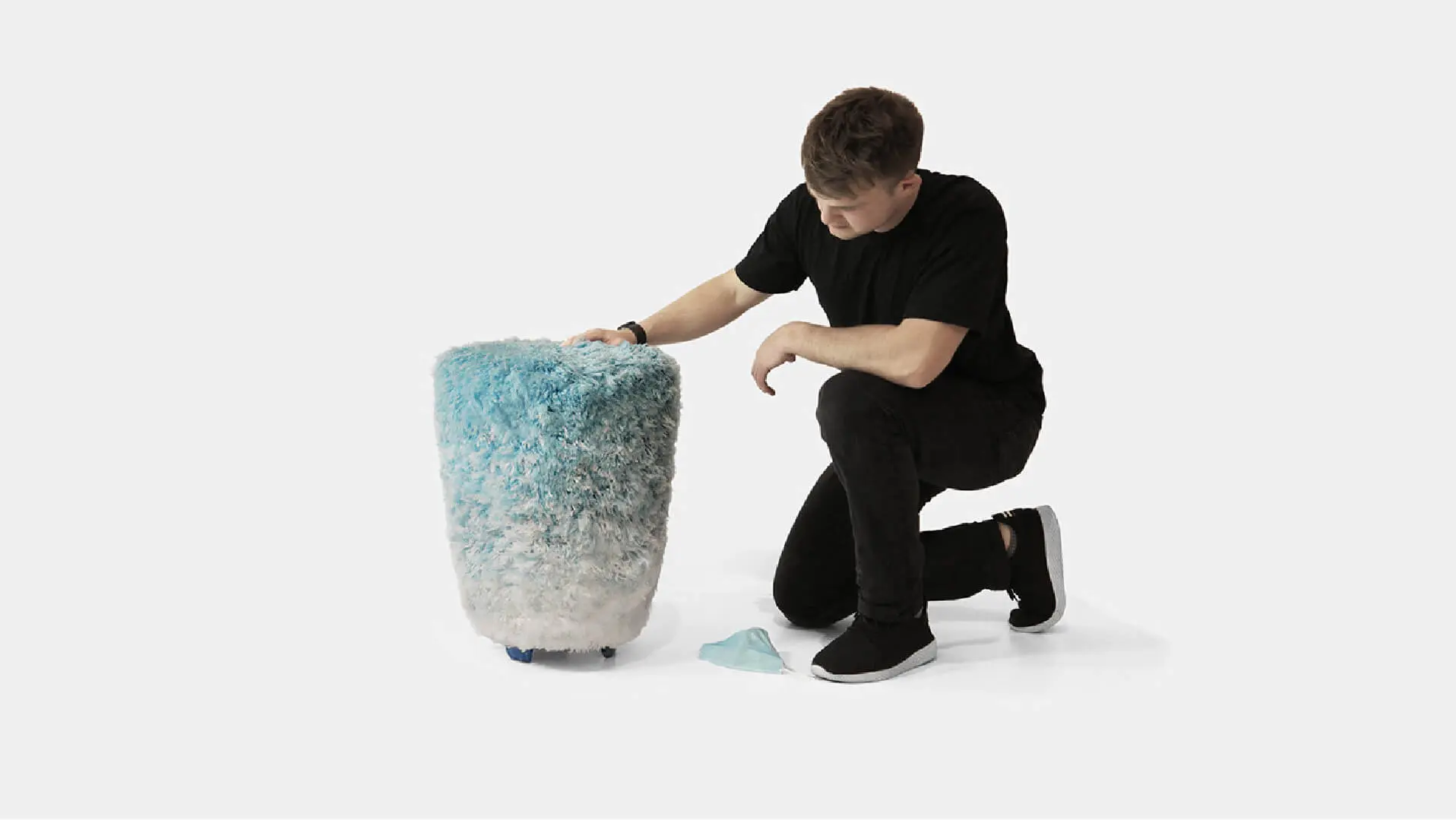
If you didn’t know by now, face masks are bad for the planet. They might protect us from deadly diseases but their impact on the environment is huge. To create the Veil stool, Slatter collected exactly 4,000 of them that he found across the city of London.
Disposable masks (especially the blue and white ones that have become an icon of the pandemic era) can contain a mix of paper and polymers, including polypropylene and polyester, which can’t be separated into pure streams of single materials for recycling. These plastics pollute water and can harm wildlife who eat them or become tangled up in them.
To help combat this issue designers like UK-based Joe Slatter are coming up with novel ways to create interesting products by repurposing face masks.
Your first reaction is probably “Ew, gross”, but Slatter sanitised each mask using Ozone spray, a disinfectant made from water, which can eliminate coronavirus without leaving harmful chemical residues. He also left the masks in direct sunlight for four weeks.

Once the sanitisation process was complete, he experimented by tearing the 3-ply masks apart and extracting the fibers.
[ Curious to know more about how designers are reusing face masks? Don’t miss Disposable masks repurposed into Stack and Stack stool by Haneul Kim: let’s examine plastic recycling ]
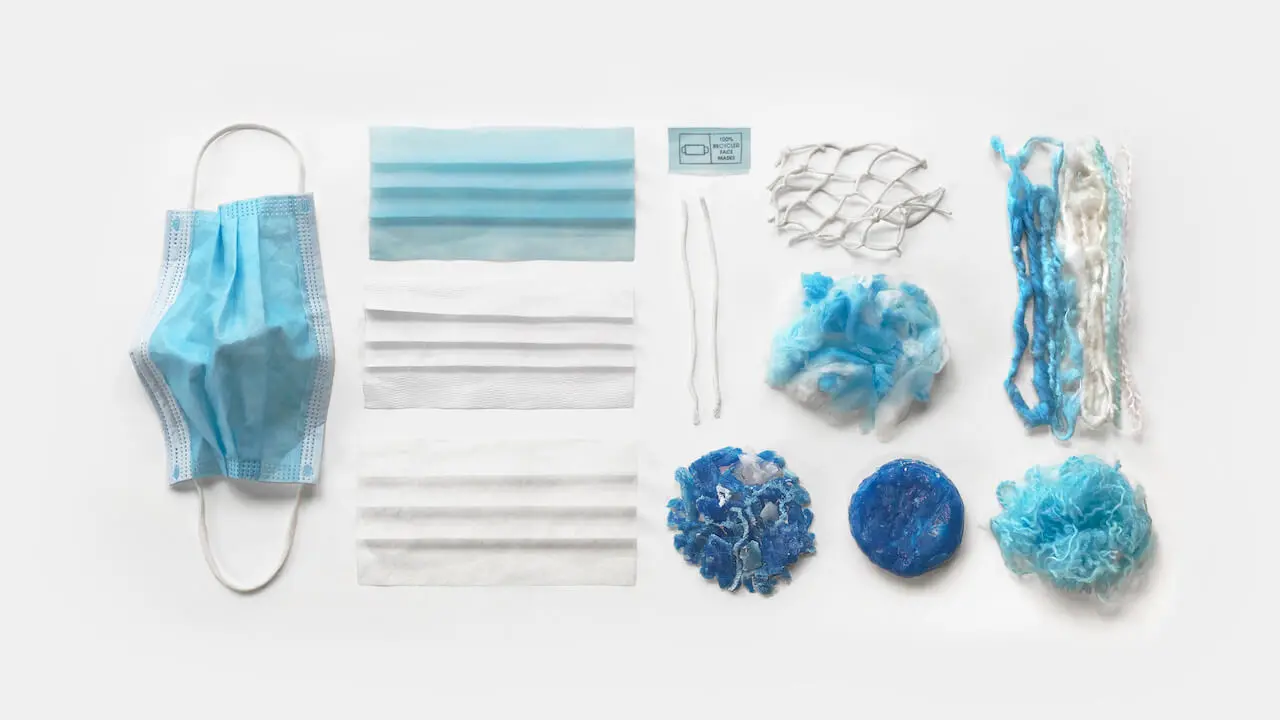
“Online articles said it was impossible to recycle them but I was curious as to why not as they are made of polypropylene,” Slatter explains. “I started ripping apart a face mask I had worn myself and realised the fibers could be extracted and twisted to make a very soft, wool-like yarn.”
Using the elastic straps to make a netting, Slatter created a foundation to which he attached the yarn using a simple cross-stitch technique called Smyrna. This sits on top of a base with 3 supporting legs, which he formed by melting down facemasks into dense polypropylene.
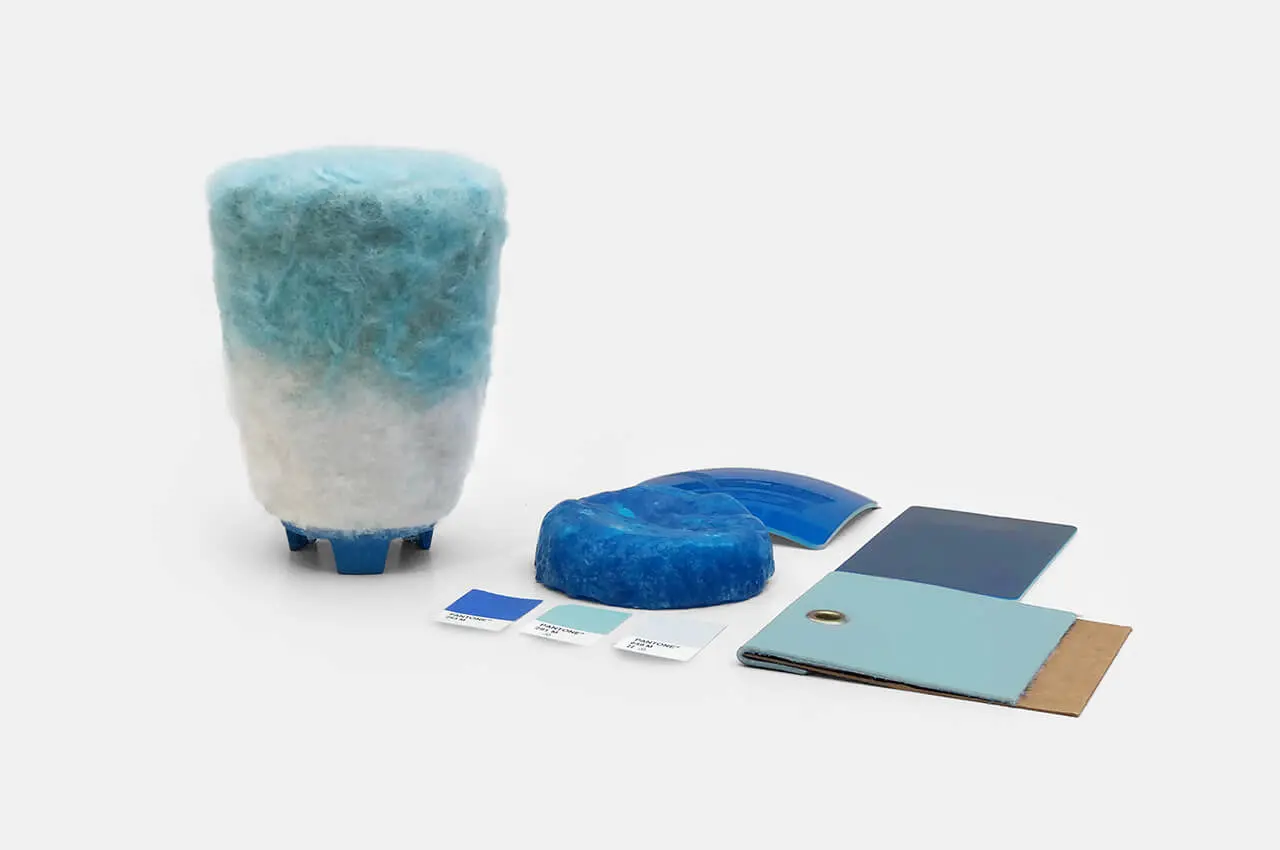
“I discovered I could make face masks into a yarn early on,” says Slatter. “It was only later on in the process when experimenting with a heat gun that I realised face masks could also be melted down to make a very strong and dense plastic.“
“[At this point], the entire project changed direction and into designing a stool that used the mask in both its soft form and solid form.”

To emphasise the origins of the materials used, Slatter opted for a two-tone design creating a steady gradient of blue to white. This was achieved by dissecting the 3 layers that make up each disposable face mask and separating the blue fibers from the white.
“Any off-cuts and the middle filter layer were melted down to make the feet, meaning every part of the mask apart from the small metal nose grip was used.”
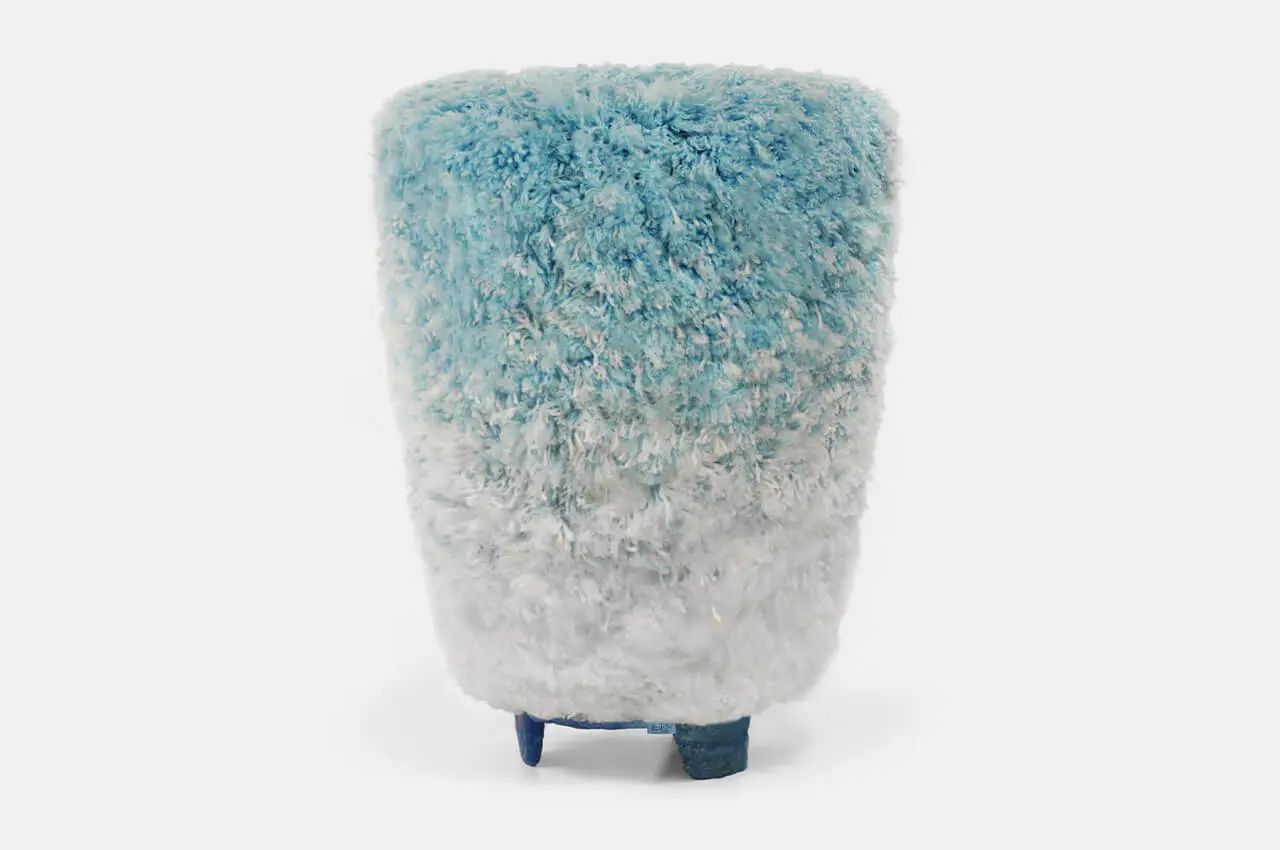
Slatter’s recycled Veil stool (see more here) highlights both the strength and softness disposable face masks can be formed into whilst proposing a beautiful solution to a destructive problem.
[ Find out more about the ingenious ways designers are tackling plastic waste, don’t miss A chair made from 20KG of plastic waste found in Indonesia ]



